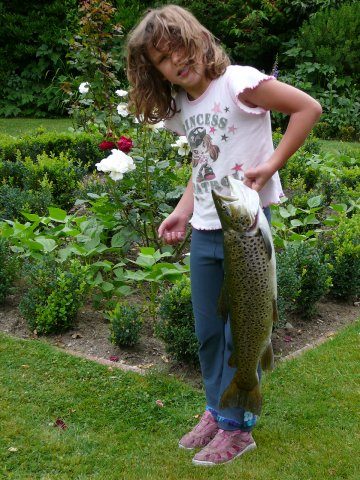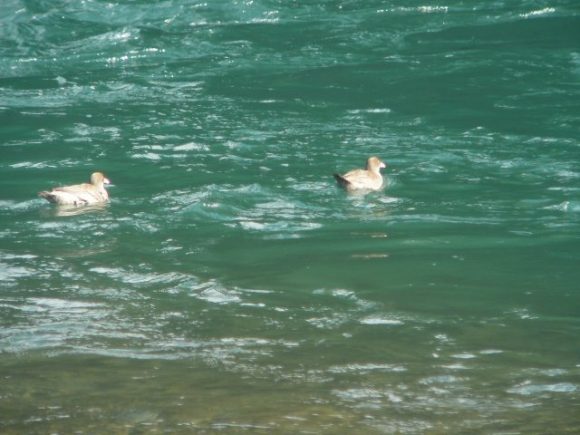Brown Trout: Are They a cause for the later runs of the rainbow Trout?
An interesting idea caught my attention in a list of possible causes for the later runs of rainbow trout in the Tongariro river. Michel Dedual spoke to the Taupo Fishing Advisory Committee on Monday night to update the group on what is happening in the fishery.
From my experience of fishing the Tongariro river over the last 35 years I caught few brown trout in the first 30 years. One or two a year perhaps. Over the last 5 years I have caught a noticeable number at the beginning of each season. I don’t target browns by fishing at night. My catch is during daylight hours.
My previous fishing had been in the Rangitaiki river where the catch was 1 brown trout to 4 rainbow trout. There the rainbow trout were more prized than the brown trout.
The rainbow trout are more prized in the Taupo fishery as well and I recall that under Internal Affairs management of the fishery there was an attempt to cull brown trout from the Managamawhitiwhiti stream as they were deemed unsuitable in the fishery.
The presentation of the idea that brown trout could be a cause for the later spawning of rainbow rrout, therefore, interested me for the following reasons. we know that:
- Brown trout spawn earlier than rainbow trout in the Tongariro River (not only in the Tongariro but in every Taupo river).
- Brown trout select different food to rainbow trout and have seemingly been unaffected by the downturn in the rainbow trout fishery. brown trout feed along the littoral zone of the lake and in the lower parts of rivers to feed. On the other hand rainbow feed mainly in the pelagic zone of the lake. Therefore, the food supply of rainbow trout is more affected by the limnological processes in the lake than the food of brown. If brown would feed in the pelagic zone they would also suffer the shortage of food
- There seem to be more brown trout caught in the early part of the season than was previously the case.
- The rainbow trout depends on smelt for their main food supply. (see comment above)
Could it be that as the brown trout are particularly feeding on juvenile rainbow spawned during the early part of the spawning season but not so much on those from the later part of the run? If it is the case then the progeny of later spawning rainbow trout have the best chance of survival explaining the shift in the timing of the run. However, this life cyce may also be disadvantageous. Juvenile rainbow trout when entering the lake need to find smelt quickly to survive. If they enter the lake when smelt are not spawning (between May and October) they may not find smelt quickly enough and die.
The study of the feeding behaviour of brown trout could shed some light on the impact that brown trout could have on the shift in timing of the spawning runs of rainbow trout. This is possible through the measurement of stable isotopes based on the principle that “you are what you eat.” A study of the liver can tell what the fish has been mainly eating during the previous week. A study of the flesh tells what has been mainly eaten during the previous month. If such a study showed that the brown trout were feeding on the juvenile of rainbow trout that were produced during the early part of the spawning then we would be able to link that fact to the later runs of rainbow trout.
We do know from the Waipa trap results that the first 3 days of October saw more trout trapped than in the entire month of September. We know that it takes about 30 days for a fish to enter the Tongariro river and make it to the Waipa trap. That evidence shows the later runs of rainbow trout.
Among the ideas for the later spawning runs, this idea appealed to me.
Aeromonas Salmonicida
A new pest has emerged in the Mataura river in Southland. Aeromonas Salmonicida. It is a well known disease overseas that has had a bad effect on salmonids of which both rainbow and brown trout are species. There is a lot of literature available on line. I have just learned of its presence in NZ. It is a bacteria very easily transported and is a new threat to NZ freshwater fisheries. It was first observed in lamprey eels and has the appearance of red boils on the flesh of the fish. It is not good news for fish. To preserve our fishery we must keep our gear scrupulously clean with check clean dry though to be honst, I don’t know if this will control this particular disease.
Whio (Blue Duck) and 6 ducklings
The Department of Conservation is anxious to receive reports of a blue duck with 6 ducklings in the area between the Hydro Pool and the Major Jones Pool. The Department seeks reports of sightings and the number of ducklings. Hopefully all will survive.
Fishing Report
It has been a beautiful day in Turangi which is a pleasure after a week of wet weather and two flood sequences. We have had 191.6 mm of rain to the time I prepared this page. The last flood was the result of 20.4 mm over the last two days. I think that there should be good fishing as the water levels go down.
Tongariro at Turangi – River-flow
|
Genesis have advised me that they took the opportunity to clear sediment from the Rangipo dam with this flood. Genesis believes that because of the timing of the release that it should pass through the river without effect. I hope that they are correct but I will explore the lower river and assess the situation for myself.
Eric Wilson
Secretary/Treasurer



